2017 Hyundai Ioniq First Drive Review - Alternatively Conventional, Sublimely Sufficient

2017 Hyundai Ioniq
At 30,000 feet above Nebraska, a man who could generously be described as severely corpulent had finally reached the level of personal solace required to allow his mass to spill out of seat 27D and into my own. It was another 1,500 miles to New York, and I could already feel the damp warmth of his body begin to encompass my left side as his sweat began seeping through his pants’ cotton-nylon blend and into my dark denim. Hyundai had invited me out for the introductory press event for its new hybrid/EV five-door, the Ioniq, and I desperately wished I was back in California braving unseasonably heavy rains on low rolling resistance tires as some overfed stranger’s lap oozed across my thigh.
I would have given practically anything to be back behind the wheel of one of Hyundai’s demo cars — not because the Ioniq was the pinnacle of automotive excellence, but because, a day earlier, the company claimed the hybrid version could make the entire transcontinental journey for roughly $100. I’d have gladly paid the Benjamin and spent four headache-free days on the road to avoid four of the most emotionally traumatic hours of my life.
While saying that Hyundai’s new green machines are little more than a preferable alternative to being smothered by middle-aged flesh isn’t the highest praise, I can also say that the Ioniq Electric, Hybrid, and Plug-in Hybrid are all superlatively serviceable — surpassing expectations without ever becoming a sensation. This is adequacy at its most acceptable.
Hyundai desperately wants to make a good impression with this car, which is probably why it flew me out to California to spend the latter half of last week testing all three variants of its new electrified hatchback while God attempted to erode Santa Barbara through torrential rain. (Full disclosure: I also received free food and a hotel room.) It believes that the Ioniq can compete not only with the Toyota Prius and Chevrolet Bolt, but also internal combustion vehicles like the Chevy Cruze. It’s a notion that I agree with, at least in concept.
As with so many of Hyundai’s vehicles, an appetizing price remains the cornerstone of customer consideration. The hybridized Ioniq begins at $22,200 in basic “Blue” trim and maxes out at $30,500 with all of the trimmings — significantly lower than an identically equipped Toyota Prius.
Things are a little trickier with the all-electric variant. While $29,500 (not including the $7,500 federal tax credit and $835 destination charge) puts it miles away from Chevrolet’s $36,620 Bolt EV, you are getting noticeably less car with only 124 miles range compared to the Chevy’s 238-mile capability. That’s perfectly acceptable for daily commuting duties but would make a day trip out of state to visit less-popular relatives more trouble than you’d care to deal with. The Bolt is also more of a lark behind the wheel and would decimate the Ioniq BEV in race. The 88 kW motor simply isn’t up to the challenge.
However, what the Ioniq lacks in performance it makes up for in efficiency. Hyundai cites its EV’s combined 136 MPGe as the best currently in production — the Bolt and eGolf manage 119 MPGe each, with Nissan’s Leaf coming in a distant third at 112 MPGe. Hyundai believes that people who really care about the planet will take that into consideration.
It’s an identical story with the hybrid’s 58 mile-per-gallon combined rating — which, again, makes it the most fuel-efficient non-plug-in vehicle in its class. Hyundai also mentioned that the Ioniq uses lithium-ion polymer batteries stead of the environmentally taboo nickel-metal batteries. There was even an extended discussion on the sustainable sourcing used for the materials that made up the vehicle’s interior.
The interior is also the quickest way to tell the nearly identical trio apart. The electric version has a push-button gear selector while the hybrids both use a traditional center-mounted lever. Despite all of the talk of volcanic ash infused A-pillars and sugar cane-sourced dashboard material, it’s not a stand-out place to park your rear end. That said, it was on par with what the nicer ICE compacts offer and had one of the more intuitive layouts I’ve come across recently. Overall, it matches the car’s exterior in feeling almost premium but without seeming cheap. Satisfying buttons control the majority of the important functions and the center touchscreen was extremely responsive and user-friendly.
You could easily go between your 1996 Toyota Camry and your 2017 Hyundai Ioniq Hybrid, feeling like you’ve stepped into tomorrow but without the unpleasantness of culture shock.
That’s both a good and a bad thing. While I admittedly hold a personal prejudice against the current Prius, I will acknowledge that it is a more comfortable and futuristic place to spend time, and that’s important to some shoppers. The Ioniq is comparatively normal, lacking the Toyota’s oddball styling, goofy gear selection apparatus and central information bar. It’s a tasteful restraint and familiarity not present in the Prius (or the less-homely Prius Prime). Hyundai’s look is understated and handsome, even bordering on interesting, but it appears plain next to either Toyota.
As for driving dynamics, Hyundai’s Ioniq is appreciably more fun than a Prius thanks to the hybrid’s MacPherson struts, multi-link rear suspension, six-speed dual-clutch transmission, Michelin tires, and better-than-expected flat-bottom steering wheel. I was surprised how compliant the car was during spirited driving — it responded well to being poked and prodded and maintained its composure. However, the 1.6-liter Atkinson-cycle inline-four isn’t a powerhouse, even when paired with a 32 kW electric motor and its 1.56 kWh battery. The two powerplants’ combined efforts only result in 139 horsepower, 195 lb-ft of torque, and a supremely lackluster 10-second 0-60 mph time. The BEV posts a similar acceleration number but is noticeably easier to upset on a bad road.
The electric and hybrid Ionic both provided unnecessary, but welcome, sport modes. Moving the hybrid’s shift lever left from Drive results in new computerized shift points (which can be overridden using manual gear selection), a race-oriented digital display, more responsive throttle inputs, heavier steering, and puts the gasoline engine on high alert. The added performance is more appreciable at lower speeds and becomes nearly imperceptible on the expressway.
Meanwhile, the Ioniq EV has a push-button sportification mode that changes the gauge screen’s accent colors to orange and red. While I think I felt weightier steering and additional power coming in below 35 mph, it could be an illusion created by the crimson display. However, a sense of sportiness can be added by amping up the electric’s regenerative coast braking. This came in particularly handy when driving down some fairly narrow mountain roads.
Regen doesn’t occur on the hybrid model at all, unless you decide to press the left pedal yourself. While you can always manually downshift into a lower gear, it doesn’t return any energy back into the battery. Another minor gripe is that there was an odd dead spot and delay on the accelerator. It seemed to take just a moment longer than what was acceptable when I gave the Ioniq the very subtlest suggestion of throttle input. Otherwise, I was happy to putt around in the Hyundai. The hybrid’s 1.6-liter comes in unobtrusively when you need it and then vanishes when you don’t, which is more often than expected.
Forward visibility is wonderful while rearward observations provide a more substantial challenge. The Ioniq’s back porthole is comically small and the rear pillars are the leading authority in maintaining a blind spot. This is worsened by the downward taper of the car’s rear, which reduces rear headroom while helping the car achieve its excellent 0.24 coefficient of drag. Battery placement under the rear seats also improves aerodynamics by allowing the car to ride lower. It also freed up some rear cargo space (less in the electric model) and allows seating for five.
Available advanced safety features include collision detection, automated braking, blind spot detection, rear cross-traffic alerts, smart cruise control, and a lane departure warning system. Throwing the Ioniq into a few European walls resulted in a five-star best-in-class crash test rating, though U.S. results aren’t in yet.
For now, the Ioniq will happily sync to your smartphone and recharge it wirelessly. Hyundai owners can mate their vehicle’s center console to their Amazon Echo or Google Home device too. There is also a topographical GPS system that works with your car to anticipate the most energy efficient route and way to drive, telling you the best times to coast. Eventually, the company says it intends to use the vehicle as a development platform for a fully autonomous car. Hyundai wasn’t crystal clear on the timeline for that and I’m not willing to speculate. The Ioniq made a few self-driving laps around the Consumer Electronics Show this year, purely for the benefit of the press, and there is a small test fleet in Korea shuttling around employees. That’s the extent of my knowledge.
I am, however, willing to carefully speculate on the prototype plug-in that I was informed is around “90 percent” complete. I know a few things for certain: Hyundai expects it to reach the market in the final quarter of this year with the same 1.6-liter internal combustion unit, 44.5 kW electric mill, 8.9 kWh battery, and an estimated 28 miles of all-electric range. My test mule felt interchangeable to the standard hybrid and I doubt that would change much before production. Still, 10 percent leaves a generous amount of wiggle room, possibly enough to alter the vehicle’s personality.
Chatting with company executives and PR representatives, the plot for the Ioniq family appears to revolve around coaxing timid consumers into their first electrified vehicle while also poaching Prius ex-pats and environmentally savvy Millennials. Hyundai is convinced that further urbanization by America’s youth and a continued interest in EVs will make the vehicle a success.
That’s a gamble considering North America’s below-average fuel prices and affinity for sport-utility vehicles, but impressively adequate economy cars have surprised us in the past (rest in peace, Geo Metro). Maybe this hatchback will do so in the future. It’s certainly a bet I would consider taking. And if I were, God forbid, a hypermiler, then the Ionic hybrid would be on my no-brainer shortlist — so long as Hyundai’s fuel economy estimates are all above board.
However, that aspect didn’t really surprise me; I was prepared for it to be competitive with the Prius. The curveball the Ioniq threw was that it also seems like it might be a decent alternative to some of the more traditional small-engined options, especially on a lengthy road trip.
The bargain battery-electric unit has limited usefulness outside of the city and wasn’t really my cup of tea, but I could see Hyundai’s hybrids appeasing everyday people. It isn’t the car you would recommend to an enthusiast — it’s the car the enthusiast would recommend to you. Completely average and unexciting, but better than the sum of its parts (and a good value, too). It’s what the Corolla used to be and, frankly, the kind of car Toyota should have matured it into by now.
The 2017 Hyundai Ioniq Hybrid is available today, while the electric variant will hit California dealers in April with an available three-year subscription plan that includes unlimited mileage and maintenance — everything but insurance, really. Other states are welcome to the EV upon special order. All Ioniq trims come with Hyundai’s new lifetime battery warranty, provided you are the vehicle’s original owner.
[Images: Hyundai Motor America]

A staunch consumer advocate tracking industry trends and regulation. Before joining TTAC, Matt spent a decade working for marketing and research firms based in NYC. Clients included several of the world’s largest automakers, global tire brands, and aftermarket part suppliers. Dissatisfied with the corporate world and resentful of having to wear suits everyday, he pivoted to writing about cars. Since then, that man has become an ardent supporter of the right-to-repair movement, been interviewed on the auto industry by national radio broadcasts, driven more rental cars than anyone ever should, participated in amateur rallying events, and received the requisite minimum training as sanctioned by the SCCA. Handy with a wrench, Matt grew up surrounded by Detroit auto workers and managed to get a pizza delivery job before he was legally eligible. He later found himself driving box trucks through Manhattan, guaranteeing future sympathy for actual truckers. He continues to conduct research pertaining to the automotive sector as an independent contractor and has since moved back to his native Michigan, closer to where the cars are born. A contrarian, Matt claims to prefer understeer — stating that front and all-wheel drive vehicles cater best to his driving style.
More by Matt Posky
Latest Car Reviews
Read moreLatest Product Reviews
Read moreRecent Comments
- 3SpeedAutomatic Nope....
- Bd2 Looking forward to flooding the rental lots with Hyundai and Kia models, this is just one obstacle now eliminated.
- Kcflyer keep the color. lose the stupid front design. make it reliable, at least as reliable as a base 911. Then and only then is it somewhat worthy of that price.
- FreedMike I'm not sure why anyone would choose this over an A8 or S-class.
- FreedMike I think the manufacturers who are discontinuing affordable small and midsize cars in favor of more expensive crossovers (that are built on the same platforms and use the same mechanicals as said small and midsize cars) may well live to rue that decision. Having said that, though, at least GM is offering decent entry level stuff beyond the Malibu, so good for them.




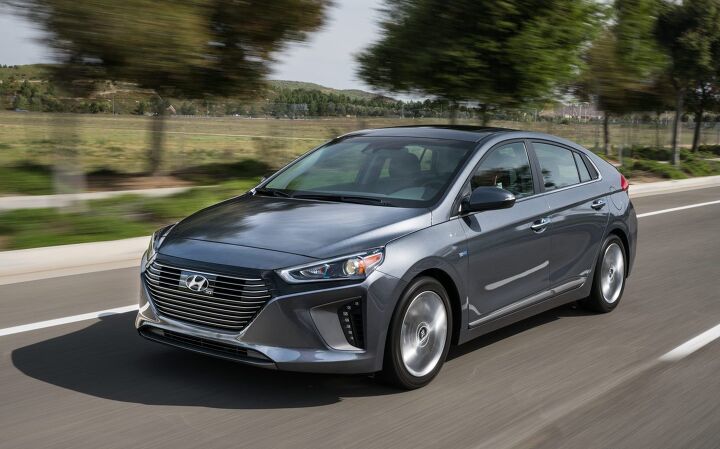










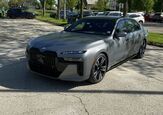











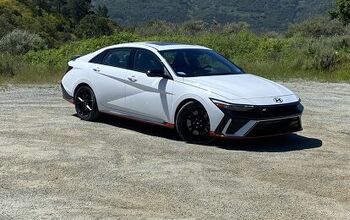
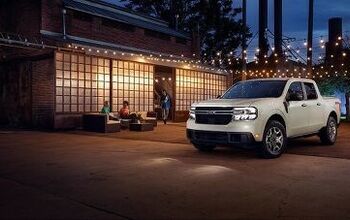
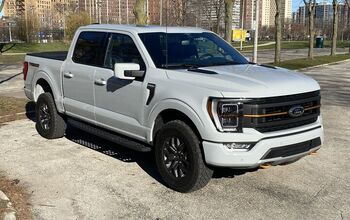

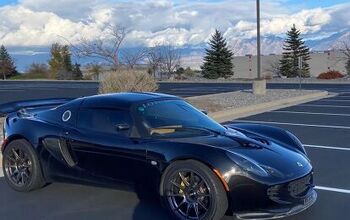
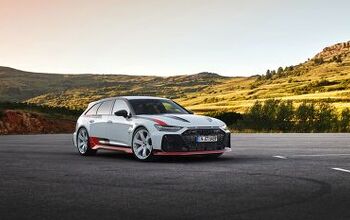
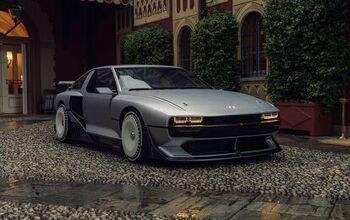
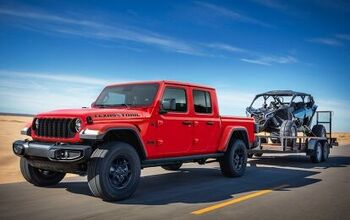


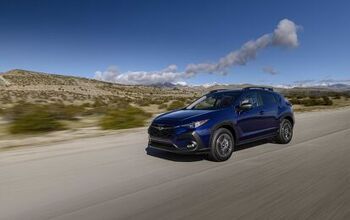



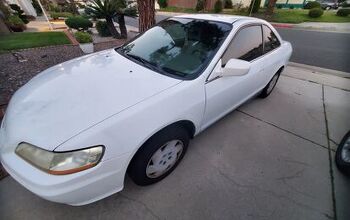
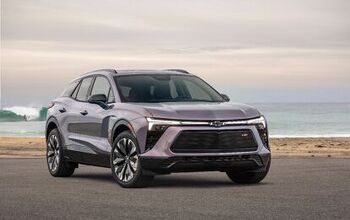
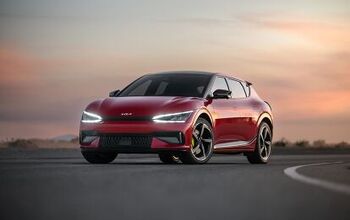
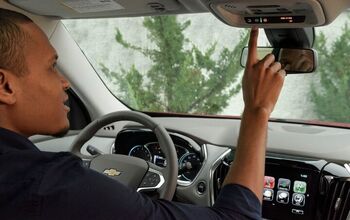
Comments
Join the conversation
How big is it? I think a lot of the Prius's success comes from being about as big as midsized sedans used to be, plus the utility of a hatch. Not all of us have grown enough to need something the size of a modern Camry or Accord, but most compacts struggle with car seats or taller back-seat occupants.
When discussing sport mode, the author says "electric" when he means "plug-in hybrid." In fact, the failure to stick to a single nomenclature for each model makes this article needlessly confusing to read at first pass. This doesn't have to be hard: There is a hybrid, a plug-in hybrid, and an EV...just call them by those names, every time.